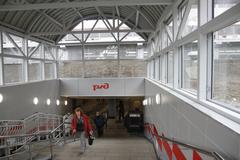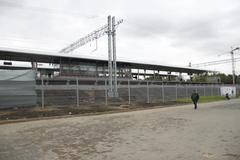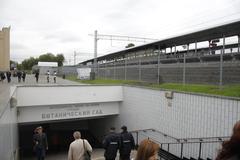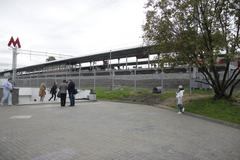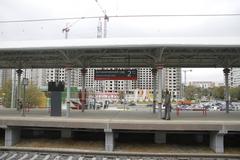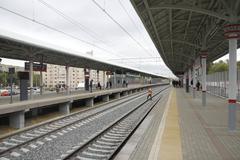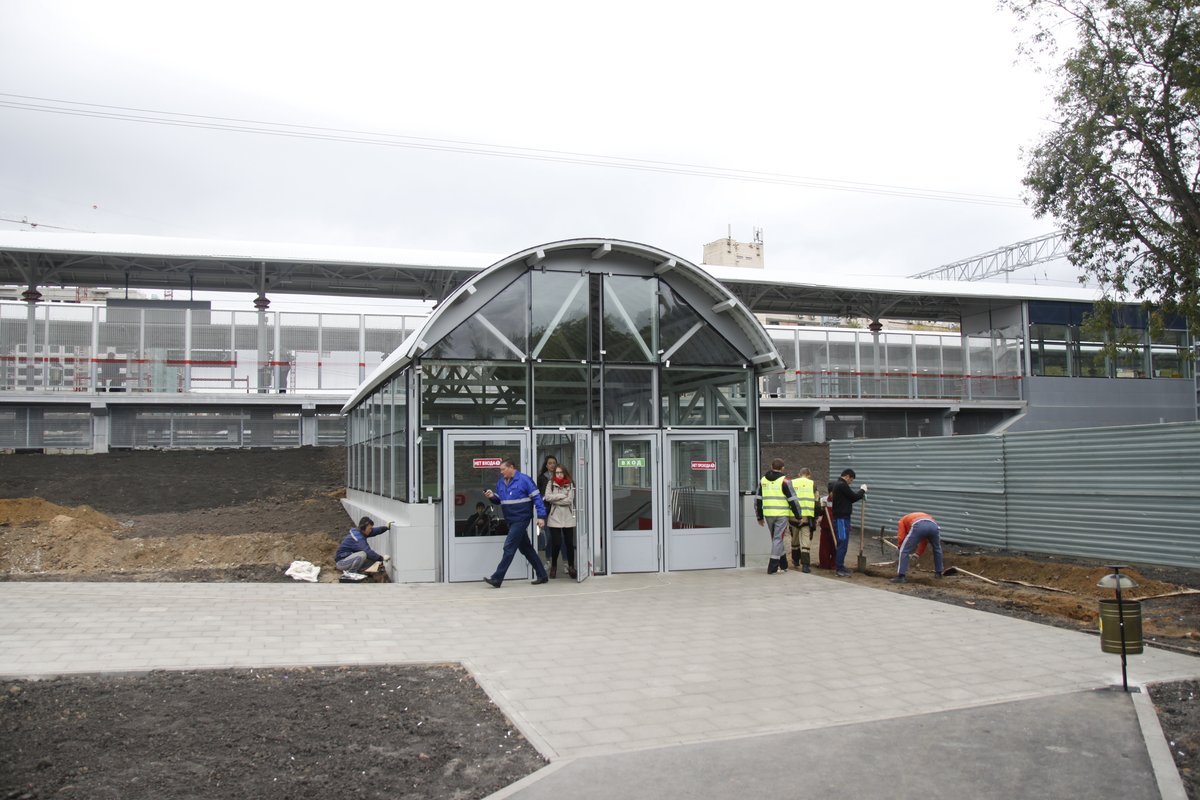
Botanichesky Sad Moscow: Complete Guide to Visiting Hours, Tickets, and Historical Highlights
Date: 14/06/2025
Introduction
Nestled in Moscow’s dynamic cityscape, Botanichesky Sad is a living testament to Russia’s dedication to botanical science, cultural preservation, and public education. Known officially as the Main Botanical Garden named after N.V. Tsitsin of the Russian Academy of Sciences, this expansive site covers over 300 hectares in the Ostankino district. It stands as the largest botanical garden in Russia and ranks among the largest in Europe. Established in 1945 under Academician Nikolai Vasilievich Tsitsin, the garden reflects post-war ambitions for scientific advancement and environmental stewardship (Wikipedia, BGCI).
Botanichesky Sad offers a unique blend of cultivated collections, natural woodlands, thematic gardens—including the celebrated Japanese Garden and Rosarium—and extensive greenhouses. With more than 18,000 plant varieties and approximately 8,000 species, the garden is both a major research institution and a serene urban retreat (WeHeart.Moscow, KudaMoscow).
Culturally, Botanichesky Sad also resonates through the eponymous metro station and surrounding landmarks, symbolizing the intersection of urban development, Soviet architecture, and botanical heritage (Vagrants of the World, Russia Beyond). Whether you’re seeking insight into plant diversity, peaceful walks, or a brush with Moscow’s scientific legacy, Botanichesky Sad promises an immersive experience.
Table of Contents
- Introduction
- History & Cultural Significance
- Main Attractions and Features
- Visiting Information
- Location and Access
- Facilities & Amenities
- Practical Visitor Tips
- Nearby Attractions
- Safety & Visitor Etiquette
- FAQ
- Conclusion
- References
History & Cultural Significance
Foundation and Growth
Founded in April 1945, Botanichesky Sad was envisioned as both a research hub and a public park. Under the guidance of Academician Tsitsin, the garden quickly became central to plant acclimatization, conservation, and education (BGCI). Its landscape evolved to encompass over 332 hectares, with zones dedicated to nurseries, thematic gardens, and natural forests (WeHeart.Moscow).
Architectural and Landscape Heritage
The garden’s architectural highlights include the 1945 Laboratory Building, extensive greenhouses, and the Japanese Garden, renowned for its authentic landscaping and seasonal cherry blossoms. The grounds also feature the Kamenka River and historic woodlands, offering a rich blend of curated and wild environments (Geomerid).
Botanichesky Sad’s name and significance extend into Moscow’s urban tapestry through the Botanichesky Sad metro station—an exemplar of Stalinist architecture with ornate floral motifs and a pivotal role in the city’s transport history (Vagrants of the World, Russia Beyond).
Main Attractions and Features
Expansive Landscapes and Natural Diversity
Botanichesky Sad integrates cultivated collections with untouched forests, meadows, and water features. Notable historic areas include the Erdenevskaya Grove and Leonovsky Forest, with roots tracing back to the 16th century.
Thematic Gardens
Rosarium (Rose Garden)
Established in 1946, the Rosarium spans 2.5 hectares, displaying over 60 rose varieties alongside perennials and bulbous plants.
Shadow Garden
A haven for shade-loving species from Europe, Asia, and America, this 0.9-hectare area preserves the genetic diversity of ornamental woodland plants.
Japanese Garden
Opened in 1987 and designed by Kinsaku Nakajima, this garden features authentic Japanese landscaping, cherry trees, ponds, and stone architecture.
Fruit and Berry Collections
Dedicated zones highlight apples, cherries, plums, and more, showcasing the breadth of Russia’s cultivated fruit varieties.
Dendrological Collection
A diverse array of native and exotic trees and shrubs, particularly striking in spring.
Greenhouses and Conservatories
- Old Greenhouse: Open year-round, featuring tropical and subtropical plants, including rare orchids and palms.
- New Greenhouse: Completed in 2016, houses around 7,000 species for research; closed to the public.
- Fund Greenhouse: Scientific repository with one of Europe’s largest tropical collections, occasionally open for tours.
Natural Forests and Water Features
Visitors can explore oak, birch, spruce, and aspen forests and enjoy tranquil water features like the Kamenka River and the “Golden Ear” fountain.
Visiting Information
Visiting Hours
- Main Botanical Garden: Tuesday to Sunday, 10:00–20:00 (closed Mondays).
- Aptekarsky Ogorod (Historic Garden): Opens 10:00 daily. Closes at 5:00 pm in winter, extends to 11:00 pm in June (Gardenvisit).
- Seasonal closures may occur in April for maintenance and during extreme weather; always check the official website for updates.
Tickets and Admission
- Main Garden: Entry is free; guided tours cost 550 rubles (adults) and 330 rubles (students/pensioners).
- Aptekarsky Ogorod: 100 rubles (full), 50 rubles (concessions), 150 rubles (evening, no concessions). Free for eligible groups (Gardenvisit).
- Tickets are available at entrances and online.
Accessibility
Both sites are wheelchair accessible with paved or well-maintained paths. Assistance is available upon request.
Guided Tours & Events
Tours in Russian (occasionally English) are available by advance booking, typically on Thursdays and Saturdays. The gardens host seasonal festivals, workshops, and plant fairs—check schedules in advance.
Photography Tips
The Rosarium in summer, Japanese Garden in spring, and historic glasshouses offer excellent photo opportunities. Photography is allowed; professional shoots may require permission.
Plant Nursery & Shop
Saplings, seeds, and exotic plants are available for purchase near the greenhouses. Bring cash for purchases.
Location and Access
- Address: 26 Prospekt Mira, Moscow, Russia, 129090
- Metro: Botanichesky Sad (Kaluzhsko–Rizhskaya Line & Moscow Central Circle) or Prospekt Mira (for Aptekarsky Ogorod)
- Nearby Landmarks: Ostankino TV Tower, Museum of Cinema, VDNH
Facilities & Amenities
- Restrooms available onsite
- Benches throughout the gardens
- Wheelchair-accessible paths
- Cafés and souvenir shops near main entrances
Practical Visitor Tips
- Language: Most information is in Russian; a translation app is helpful.
- Transport: Use a Troika card for metro access.
- Weather: Dress for the season and wear comfortable shoes.
- Identification: Carry a passport as required by Russian law.
Nearby Attractions
- Ostankino TV Tower
- All-Russia Exhibition Centre (VDNH)
- Local cafes and flower shops
Safety & Visitor Etiquette
- Children under school age enter free; family-friendly environment
- Pets generally not allowed to protect collections
- Do not pick plants or feed wildlife
- Staff are available for assistance
Frequently Asked Questions (FAQ)
Q: What are the official opening hours of Botanichesky Sad?
A: Main Garden: Tuesday–Sunday, 10:00–20:00; Aptekarsky Ogorod: 10:00 am–5:00 pm (winter) / 11:00 pm (June).
Q: Is there an entrance fee?
A: Main Garden grounds are free; Aptekarsky Ogorod charges 50–150 rubles. Guided tours require tickets.
Q: Is the garden wheelchair accessible?
A: Yes, most main paths and facilities are accessible.
Q: Are guided tours offered in English?
A: Occasionally; check availability in advance.
Q: Can I bring pets?
A: Pets are not permitted.
Q: Where can I buy tickets for guided tours?
A: At the entrance or through the official website.
Conclusion
Botanichesky Sad, encompassing both the Main Botanical Garden and the historic Aptekarsky Ogorod, is a multifaceted destination. It weaves together scientific research, cultural heritage, and tranquil green spaces in the heart of Moscow. With diverse plant collections, architectural highlights, accessible facilities, and year-round events, it welcomes everyone—from tourists and families to plant enthusiasts and researchers.
Plan ahead by checking visiting hours and ticket options, consider joining a guided tour, and explore nearby attractions for a well-rounded experience. For updated information, visit the official website and download the Audiala app for navigation, tours, and real-time updates.
References
- Wikipedia
- BGCI
- WeHeart.Moscow
- KudaMoscow
- Geomerid
- Vagrants of the World
- Russia Beyond
- Bengoeswhere
- ScienceDirect
- Gardenvisit
- Spotted by Locals
- Moscow.Info

